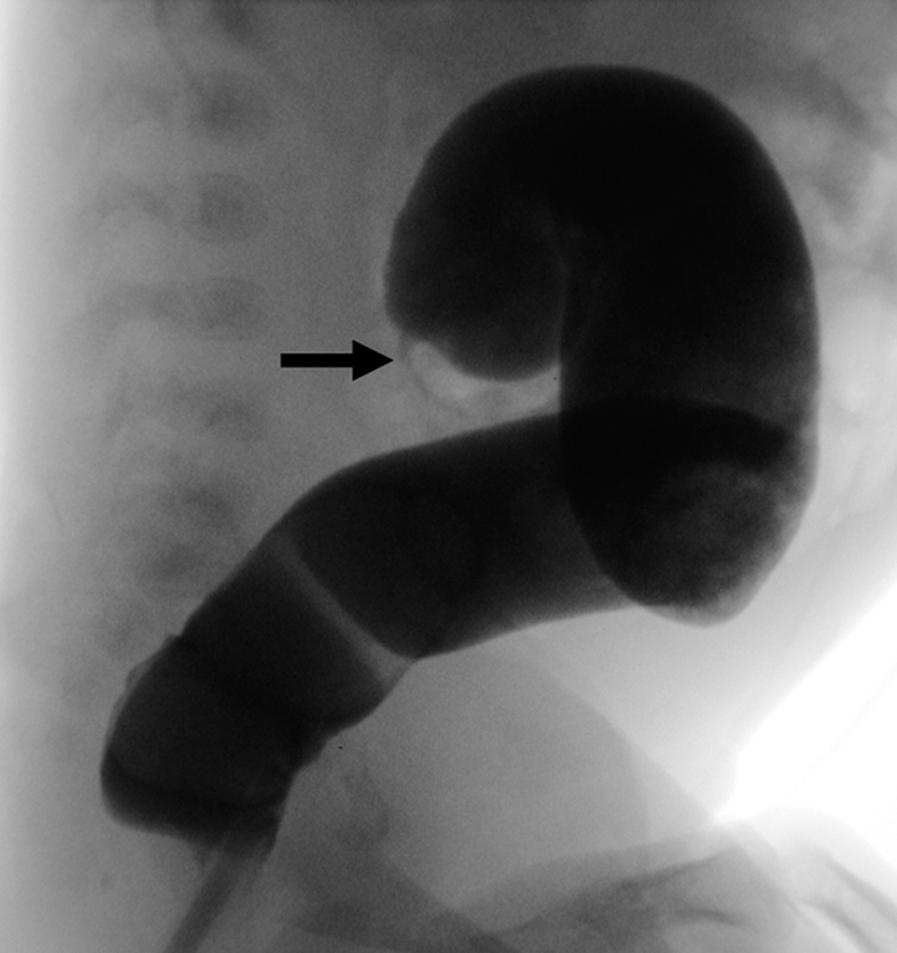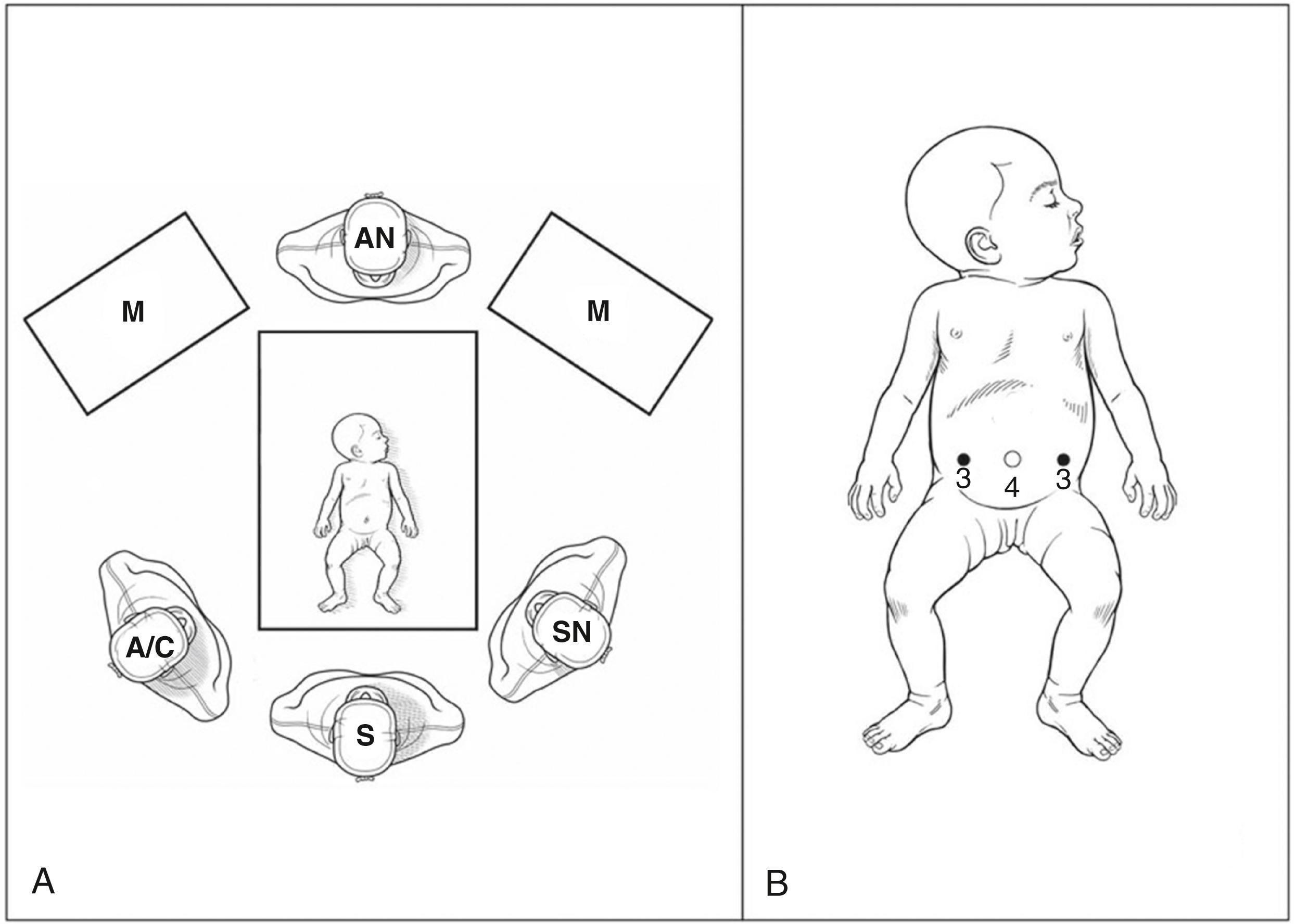Physical Address
304 North Cardinal St.
Dorchester Center, MA 02124
![]() Access the accompanying videos for this chapter online. Available on ExpertConsult.com .
Access the accompanying videos for this chapter online. Available on ExpertConsult.com .
There are a number of conditions that require an intestinal resection and anastomosis in the neonate. These include intestinal atresia, intestinal duplication, mesenteric cyst, and intestinal stricture (either congenital or after an episode of necrotizing enterocolitis [NEC]). These operations have been routinely performed through a transverse supraumbilical incision. However, almost all of these procedures can now be performed laparoscopically with intracorporeal resection and anastomosis. If not managed entirely laparoscopically, these lesions can often be mobilized laparoscopically and then brought out through an extended umbilical incision for resection, thus limiting the morbidity that accompanies a large abdominal incision. The timing of the procedure often depends on whether there was a prenatal diagnosis, associated anomalies or conditions, and symptoms of complete or partial bowel obstruction.
The timing of the workup and operation depends on the disease process. Some of these lesions, such as duplications or atresias, are diagnosed on prenatal ultrasound (US). If so, the diagnosis is usually confirmed postnatally with an abdominal radiograph and/or abdominal US. If a cystic structure is confirmed, little further workup is needed. If the lesion is nonobstructive, the infant may be fed and discharged to home, and operative correction delayed for a few weeks to allow for growth. If there is a partial or complete obstruction, then the operation should be immediate. However, care needs to be taken to differentiate between intestinal duplications and structures that may mimic them such as ovarian cysts or choledochal cysts, as the timing of these operations may be completely different. Intestinal atresias and strictures are often diagnosed or confirmed by a contrast study, either an upper gastrointestinal (UGI) study or, in many cases, a barium enema (BE). Post-NEC strictures usually present after medically treated NEC with symptoms of complete or partial obstruction ( Fig. 12-1 ).

It should be mentioned that distal atresias and strictures may be a contraindication to the laparoscopic approach if the majority of the small bowel is distended. In these cases, there is just not enough abdominal domain to allow adequate visualization or manipulation.
General anesthesia, in combination with local analgesia, is employed. A nasogastric (NG) tube is introduced to decompress the stomach and proximal dilated small bowel, and a dose of a second or third cephalosporin is given. The child is situated at the lower end of the operating table so the surgeon can be positioned between the patient’s legs. Most infants can simply have their legs spread slightly or in a frog-leg position if the surgeon prefers. The surgeon stands at the end of the table with the assistant on the left and the scrub nurse to the right ( Fig. 12-2A ). These positions may change depending on the site and mobility of the lesion in question. The main monitor is over the patient’s head but can be moved as needed to maximize the ergonomics for the surgeon.

The operation is usually done with three ports. However, a fourth port for retraction can be added if necessary. The initial camera port is introduced through an infraumbilical ring incision to avoid the umbilical vessels (see Chapter 1 for additional information). The abdomen can be inflated by a Veress needle or Hassan technique, depending on surgeon preference. A 4-mm cannula is introduced and a short (20-cm) 4-mm, 30-degree telescope is used. This gives an excellent wide-angle view. The abdomen is then insufflated to a pressure of 10 to 12 mmHg at a flow of 1 L/min. In most cases, two 3-mm ports are inserted in the right and left midquadrants, but again this can be modified depending on the site of the lesion ( Fig. 12-2B ). One of the 3-mm cannulas is later changed to a 5-mm port if a 5-mm stapler is to be used to perform the resection and anastomosis. All cannulas have red rubber sleeves that can be sutured to the skin to prevent the port from slipping. In neonates, 3-mm, 20-cm instruments are used.
Unless the area of the lesion is known to be in the colon, the bowel is then run from the ligament of Treitz distally. This is done with two 3-mm atraumatic bowel clamps. Once the location of the lesion is identified, the surgeon can decide on the technique he or she wishes to use. In many cases, the lesion can be brought out through an extended umbilical ring incision or a limited lower quadrant muscle-sparing incision. Excision and anastomosis can then be performed extracorporeally and the bowel returned to the abdominal cavity. In this chapter, we will focus on the intracorporeal technique.
Once the intestinal lesion is identified, the surgeon needs to identify the extent of resection that is needed. In cases of proximal atresias, we prefer to resect the majority of the grossly dilated bowel, assuming there is adequate distal noncompromised bowel to ensure adequate bowel function ( Fig. 12-3 ). In duplications or strictures, the resection margins are just proximal and distal to the lesion. A mesenteric defect is then made next to one end of the bowel to be removed. The bowel is then divided at this point with the 5-mm stapler (Bolder Surgical, Louisville, CO) ( Fig. 12-4A ). If this is not available, the bowel can be cut using a combination of 3-mm scissors and hook cautery to minimize bleeding ( Fig. 12-4B ). A 3-mm suction should be used to avoid peritoneal contamination if the latter technique is used. The 3-mm vessel sealer (Bolder Surgical, Louisville, CO) or, if not available, a 3-mm hook cautery is then used to strip the mesentery off of the affected bowel until normal bowel is reached ( Fig. 12-4C ). The remaining end of the bowel is then divided as previously described. The bowel is then placed in the upper abdomen for later removal. If the ends were left open, then an end-to-end anastomosis is performed.


Become a Clinical Tree membership for Full access and enjoy Unlimited articles
If you are a member. Log in here